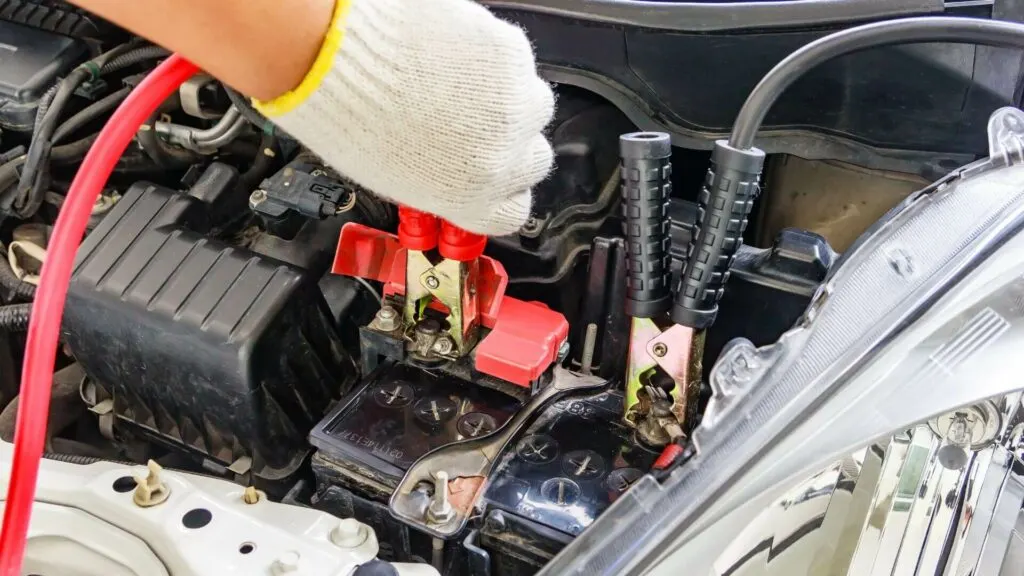A dead car battery can throw a wrench into your plans and leave you stranded.
But fear not. With the right knowledge and tools, you can jump-start your car battery and get back on the road quickly.
In this guide, we’ll explore the ins and outs of jump-starting a car battery using EasyTow USA, covering everything from when you might need jump-start services to the precautions you should take.
When Does Your Vehicle Need a Battery Jump-Start?
Before we delve into the jump-starting process, let’s identify when your vehicle might need a battery jump-start:
- Complete Battery Drain: If you turn the key and hear nothing but silence or notice dim lights on the dashboard, your battery might be completely drained.
- Slow Cranking: If your engine cranks slowly when you try to start it, it could indicate a weak battery.
- Frequent Jump-Starting: If you find yourself needing to jump-start your vehicle frequently, it’s a sign that your battery or charging system may be failing.
How to Jump-Start a Dead Battery:
Now that we’ve established when you might need a jump-start, let’s explore the steps to safely jump-start your car battery using EasyTow USA:
- Using a Vehicle with a Working Battery:
- Park the vehicle with the working battery close to the one with the dead battery, but ensure they’re not touching.
- Turn off both vehicles’ ignitions and engage the parking brakes.
- Identify the positive (+) and negative (-) terminals on each battery.
- Connect the jumper cables:
- Connect the other end of the red jumper cable to the positive terminal of the working battery.
- Attach one end of the black (negative) jumper cable to the negative terminal of the working battery.
- Clamp the other end of the black jumper cable to a metal surface on the engine block of the vehicle with the dead battery (this serves as the grounding point).
- Turn on the vehicle with the working battery and allow it to run for a few minutes.
- Carefully disconnect the jumper cables in the reverse order of how they were connected once the dead vehicle starts.Using a Working Battery:
- If you have access to a portable jump starter or a spare battery, you can skip the step of using another vehicle.
- Follow the same procedure outlined above, connecting the jump starter or spare battery to the terminals of the dead battery.
Push Start the Vehicle:
- In manual transmission vehicles, you may be able to push-start the car by engaging second gear, turning the ignition to the “on” position, and releasing the clutch while rolling the car downhill.
Precautions When Jump-Starting a Vehicle:
Jump-starting a vehicle can be a straightforward process, but it’s essential to take precautions to avoid injury or damage to the vehicles involved.
Here are some important precautions to remember:
- Wear Safety Gear: Always wear gloves and eye protection when handling batteries and jumper cables to protect yourself from acid and sparks.
- Follow Correct Procedure: Connect the jumper cables in the correct order to avoid damaging the vehicles’ electrical systems.
- Avoid Sparks: Keep the jumper cables away from moving engine parts and ensure they don’t touch each other to prevent sparks.
- Check for Damage: Inspect the batteries and jumper cables for any signs of damage before connecting them.
- Allow Time to Charge: Let the vehicle with the working battery run for a few minutes before attempting to start the vehicle with the dead battery to ensure a sufficient charge.
Advantages and Disadvantages of Jump-Starting a Vehicle:

Jump-starting a vehicle offers a quick solution to a dead battery, but it also has its pros and cons:
Advantages:
- Convenience: Jump-starting allows you to quickly get your vehicle running again without needing to wait for roadside assistance.
- Cost-Effective: If you have the necessary tools, jump-starting your vehicle is a cost-effective solution compared to calling a tow truck or professional mechanic.
- Self-Reliance: Learning how to jump-start a vehicle empowers you to handle minor roadside emergencies on your own.
Disadvantages:
- Risk of Damage: Incorrectly jump-starting a vehicle can damage the electrical systems of both vehicles involved.
- Safety Concerns: Jump-starting a vehicle can pose safety risks, particularly if proper precautions are not followed.
- Temporary Solution: Jump-starting a vehicle provides a temporary solution to a dead battery and may not address underlying issues with the battery or charging system.
Jump-starting a vehicle using EasyTow USA can be a straightforward process when done correctly. By following the steps outlined in this guide and taking necessary precautions, you can safely get your vehicle back on the road in no time. However, it’s essential to remember that jump-starting is a temporary solution, and if you encounter frequent battery issues, it’s best to have your vehicle inspected by a professional mechanic. With the right knowledge and tools, you can tackle this common roadside emergency with confidence.

Jessi is the creative mind behind The Coffee Mom, a popular blog that combines parenting advice, travel tips, and a love for all things Disney. As a trusted Disney influencer and passionate storyteller, Jessi’s authentic insights and relatable content resonate with readers worldwide.
